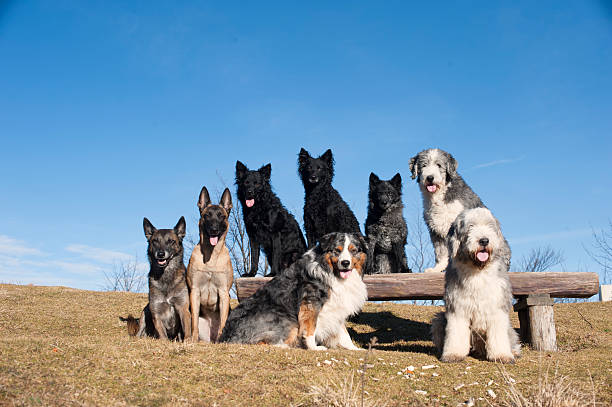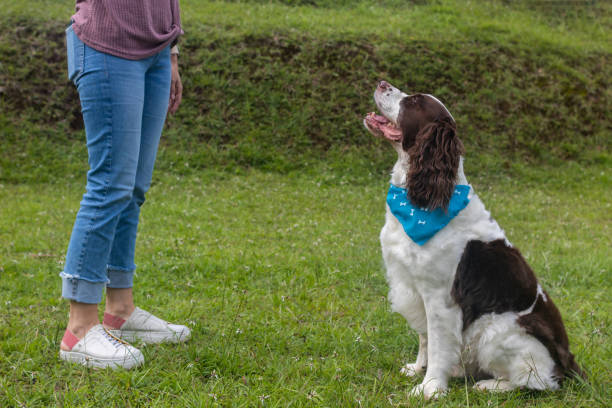The process of using positive reinforcement has proven to be effective in shaping the conduct of dogs favorably. It works on a reward and appreciation scheme for praiseworthy behaviors, and the withdrawal of such for undesirable ones. This dog training technique utilizes B.F. Skinner’s concept of operant conditioning, which was developed in the 1950s by the behaviorist, as a means to encourage positive behavior in dogs.
When we give our dogs a treat each time they do something we want them to repeat, they learn that positive reinforcement will come from us every time and not just when convenient for us!


If you’re starting with dog training, the first thing to remember is that dogs love learning and will be excited to cooperate as soon as they know what’s expected of them. Here are some tips for using positive reinforcement:
- Use a target stick or your hand (fingertips extended and slightly curved downward) to direct the dog to the behaviour you want them to repeat.
- Give your dog their treat immediately after they complete the desired action.
- Praise and pet your dog as soon as they do something right! Dogs need reinforcement from both words and physical gestures to understand that they’ve pleased us.
- Consistently deliver rewards simultaneously, in the exact location, and the same manner.
- Be consistent with your training. Suppose you reward certain behaviours some of the time. In that case, your dog will expect that level of reinforcement and may become confused or frustrated when they can’t figure out what behaviour deserves a treat.
- Help your dog by not interfering if they don’t know what you want from them.
- Avoid using treats as a way to bribe your dog to do something they are uncomfortable with or afraid of, as this might reinforce the negative behaviour! Negative reinforcement is often used in animal training. Still, it does not have the same effect on behaviour as favourable reinforcement.
- Avoid scolding or punishing your dog if they don’t do what you ask. Your dog will not understand why they’re being punished and will become even more confused about what behaviour is expected of them!
- If you give your puppy a treat every time she gets into her crate, for example, then as soon as your back is turned. You’re busy doing something else. She’ll come to expect a treat every time she goes into her crate.
- It will take some trial and error to determine the right kind of reinforcement for each dog. Some dogs are motivated by food treats, while others seem more interested in praise or playtime with their owner.
- When it comes to rewarding your dog, you should always be generous and consistent.
- If your dog doesn’t seem to be responding to treats as a training tool, try switching to something else they’re motivated by.


Behaviour Adjustment Training, or BAT, is a process that involves changing a dog’s behaviour through positive reinforcement. The focus is on teaching the dog to behave in a desired way by rewarding those behaviours and removing rewards for those behaviours which are not desirable.
BAT works as follows:
1) A word such as ‘sit’ becomes associated with a treat or praise.
2) The trainer makes eye contact with the dog and says, ‘sit.’
3) When the dog sits, he gets praise and a treat.
4) Eventually, you don’t need to say the word ‘sit’ and need to give praise and a treat.
5) The word ‘sit’ can be associated with another activity, such as going outside to play or getting a toy, by saying the word ‘sit’ before giving the treat or praise.
6) If the dog does not act after hearing a command, he is corrected with a sharp voice.
7) Negative behaviours are corrected with a sharp tone of voice.
8) Dogs should only be corrected if they have performed the negative behaviour, not just because your dog is terrible. For example, don’t correct your dog for jumping on the couch if he’s not sitting down. When you see him do it, then you can fix him.
9) BAT works well with timid and timid dogs, but it can also be used successfully with aggressive dogs.
10) It usually takes at least one to four weeks for a dog to learn new behaviours through BAT. Patience is crucial when training your dog!


If you’re looking for a way to positively reinforce your dog’s behaviour, then Behavior Adjustment Training is worth considering. With BAT, dogs are trained by associating words with treats or praise and removing rewards when they do not desire. The process of BAT can be used on timid dogs as well as aggressive ones! It typically takes at least one week before the new behaviours are fully learned, so patience is vital!
Suppose you find that your dog is not responding to positive reinforcement. In that case, you might want to try something else they’re interested in. Dogs can be motivated by praise and cuddles as well as food! Don’t forget to never scold or punish your dog for mistakes. Dogs don’t understand what behaviour they should be doing and might become even more confused!
Negative reinforcement doesn’t work in the same way as positive reinforcement.


